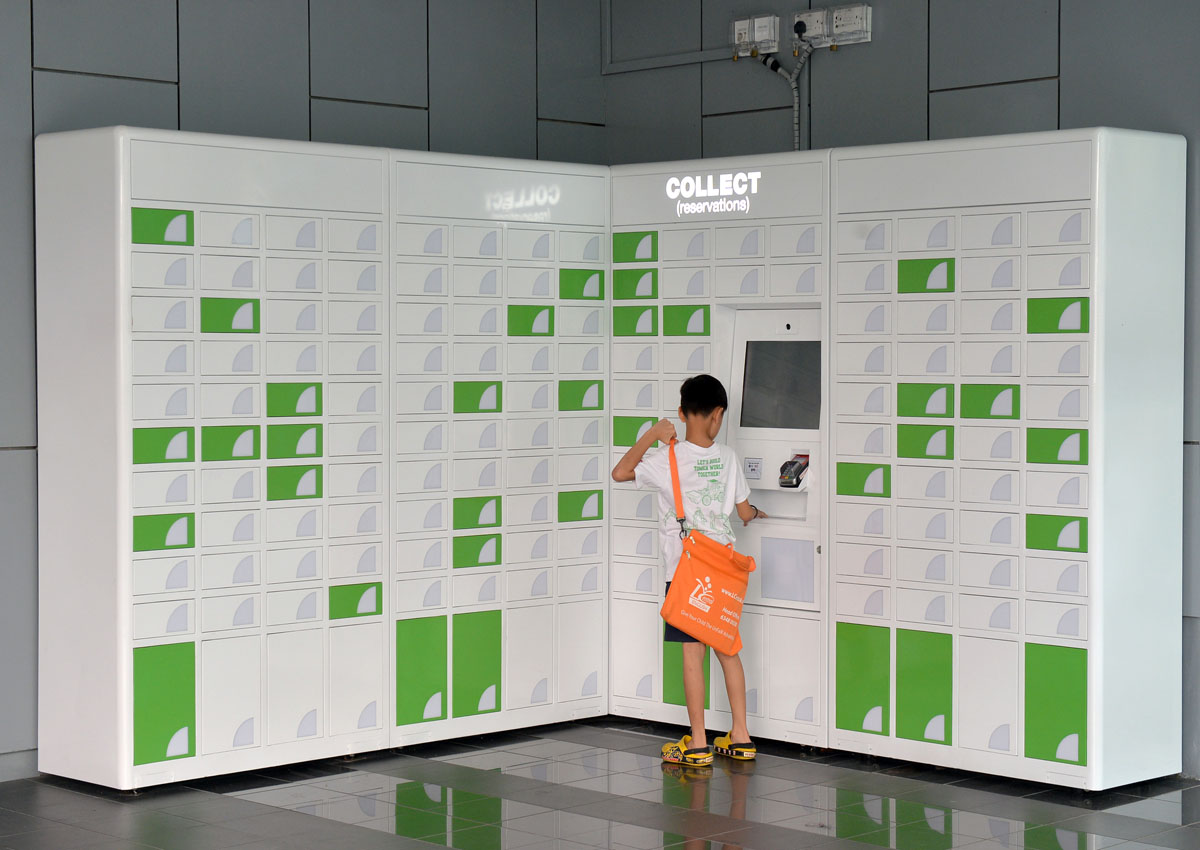For Ms Phang Koh Ni, 29, collecting a reserved book used to involve going to three different spots at Jurong Regional Library.
“I had to go to an e-kiosk to pay the reservation fee, then go to the customer service counter to pick up the book, and then go to another station to borrow the book,” she told The Straits Times.
At the counter, it takes about five minutes for the library staff to get the book, and the wait could be longer if there are others in the queue, said Ms Phang, a nurse.
Since reservation lockers were introduced earlier this year, collecting reserved items has been a one-stop, self-service process that takes two to three minutes.
These lockers, which are at seven public libraries now, will be rolled out to all 25 staff-run public libraries by early 2018.
The library@chinatown is run by volunteers.
They let people collect reserved items – books and audio-visual materials – when libraries are closed.
Waiting time is also cut as items can be picked up without going to a customer service counter.
A fee of $1.55 is charged for every item reserved, but there is no extra charge for using the lockers.
After a library user is notified via e-mail that the item can be picked up, he just needs to scan his NRIC or membership card at a machine near the lockers, make payment via cashless methods such as Nets – this can be done at the same machine in most libraries – and he can then open the respective locker.
The reservation lockers were first launched at library@orchard in 2014. The other six libraries with these lockers are those in Bukit Batok, Bukit Merah, Jurong, Pasir Ris, Sembawang and Toa Payoh.
Seven more libraries will have them by early next year.
Last year, more than 201,000 reservations were placed.
Said Ms Catherine Lau, assistant chief executive of public library services at the National Library Board (NLB): “We’ve observed a greater demand for mobility, so we are incorporating technology to complement the physical library space. Through the reservation lockers, we hope to make library materials easily accessible for users.”
Besides improving services for library users, NLB is also using technology to better support its staff.
By 2018, all public libraries will have AutoSorters that sort returned items into categories for easy shelving by staff, thus reducing the time-consuming workload of manual sorting.
The machines also use data analytics to identify the most popular items, which are then placed on the “just returned” shelves.
The AutoSorter was piloted in 2014 at library@chinatown. Enhanced models were later rolled out in the Sembawang and Pasir Ris libraries.
It is now available at five libraries.
At the Sembawang Public Library, for instance, the AutoSorter sorts about 3,000 items a day. Previously, at least two library staff per hour were needed to do the sorting.
Ms Lau said: “Reducing such laborious and repetitive tasks through automation helps NLB to care for the well-being of our staff and service partners, especially older staff.
This allows them more time to attend to patrons… It also enhances our library users’ experience.”

This article was first published on Aug 29, 2016.
Get a copy of The Straits Times or go to straitstimes.com for more stories.






